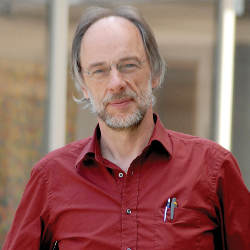
The popularity of selective workshops for computer scientists has reached an alltime high, with various versions of Germany’s Dagstuhl Seminars popping up around the globe.
The original Dagstuhl Seminars, launched in 1990, have gradually increased in number from 34 in 2000 to 64 planned for 2012. The program has also broadened over the years to include several annual events designed to support and improve computer science research.
The success of the Dagstuhl concept should be seen in light of the “disturbing trend…in which researchers now attend more and more specialized conferences and workshops without ever meeting colleagues with whom they should communicate,” says Reinhard Wilhelm, scientific director of the Schloss Dagstuhl-Leibniz Center for Informatics, which runs the seminars.
“Schloss Dagstuhl partly acts as a repair shop for this lousy trend,” Wilhelm explains, “providing a space where insightful scientists can hold workshops involving different communities that should be communicating with each other and that would never meet at a conference.”
In April, Wilhelm received ACM’s Distinguished Service Award for his work with Dagstuhl Seminars.
Located in a former late-baroque mansion in Saarland, Germany, Schloss Dagstuhl (or Dagstuhl Castle) each week hosts top scientists and promising young researchers from around the world who gather to discuss and debate a particular computer science topic, living and working together for 35 days, “resulting in an intense collaboration and exchange of ideas,” says Wilhelm.
Workshops are based on proposals submitted by scientists to the Leibniz Center’s Scientific Directorate, which meets twice a year. Each proposal is evaluated for its relevance and its potential attractiveness to members of the computer science community.
The Leibniz Center is a member of the Leibniz Association, which consists of 85 research institutes, research libraries, and research museums. Operation of the center is heavily subsidized with 50% of the subsidies coming from the German federal government and 50% from the state governments.
Meanwhile, the success of the seminars has inspired a proliferation of Dagstuhl-like venues, such as Shonan Village in the Tokyo area and the Banff International Research Station for Mathematical Innovation and Discovery in Banff, Canada. There is also discussion of setting up a “Dagstuhl” in southern China.
And, in Mysore, India, the Mysore Park workshops on the Infosys campus are also modeled after the Dagstuhl workshops.
“Schloss Dagstuhl was clearly our inspiration,” says Sriram Rajamani, assistant managing director of Microsoft Research India. “Several of us have attended Dagstuhl where it is secluded and the quality of people who get invited and the topics that get discussed are quite high. We wanted to create a similar environment in India. Professor Jay Misra from the University of Texas at Austin and Infosys chairman emeritus N.R. Narayana Murthy supported the idea, and Murthy generously gave space at the Infosys Mysore Campus and funds to run it. We have a scientific board, which peer-reviews proposals to ensure that workshops are of high quality.”
Rajamani is chair of the scientific board of Mysore Park.
Just as Dagstuhl is located in a remote area of Germany that is conducive to learning and discussion, Rajamani describes the Infosys Mysore campus as being “wonderful and quiet and a good three-plus hours’ drive from Bangalore. Once you enter the campus, you’re stuck! You cannot run away for a meeting elsewhere, and you are forced to engage in scientific discussion with your colleagues for 34 days. It is a very immersive experience.”
Begun just two years ago, there have already been five Mysore Park workshops and several more are planned for this year.
While the growing number of workshop series like Dagstuhl is becoming increasingly important to the computer science community, there is a real need for more, says Rajamani.
“The recipe for a Dagstuhl-like series is quite simple,” says Dagstuhl’s Wilhelm with a wink. “Copy our concept—and then find an attractive place for it, get strong financial support, and, of course,” he quips, “get the right people to run it.”




Join the Discussion (0)
Become a Member or Sign In to Post a Comment